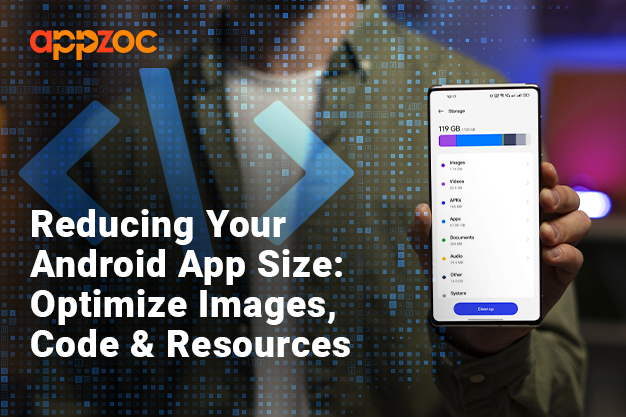
Flutter
Make the most of this cutting-edge technology by developing apps quickly! Our Flutter solutions have amazing features that can be used to create sleek, high-performance apps that can scale seamlessly across platforms.

In the competitive world of mobile applications, user experience is paramount. One of the critical factors that influence this experience is the size of the app. A bulky app can lead to longer download times, increased storage usage, and even deter potential users from installing it. Especially in regions with limited internet bandwidth or storage constraints, app size becomes a crucial factor. If you’re into Android app development in Kerala, or anywhere for that matter, understanding how to optimize your app’s size can give you a competitive edge. In this article, we’ll explore ways to reduce your Android app size by optimizing images, code, and other resources.
Images often constitute a significant portion of an app’s size. Here’s how you can optimize them:
Clean and efficient code is not only easier to maintain but can also reduce your app’s size.
Resources like layouts, animations, and libraries can add to your app’s size.
Also Read:10 Android libraries every developer should know in 2023
Kerala, with its burgeoning tech community, has seen a surge in mobile application development. The best mobile application development Kerala offers focuses not only on functionality but also on optimization. After all, an efficient, lightweight app ensures a better user experience, leading to higher user retention and positive reviews.
Reducing your Android app size is not just about improving download times. It’s about enhancing the overall user experience, ensuring that users with varying device capabilities can access and enjoy your app without constraints. By optimizing images, code, and resources, you can significantly reduce your app’s size, making it more accessible and user-friendly.
If you’re venturing into Android app development in Kerala, or if you’re looking for the best mobile application development Kerala has to offer, remember that optimization is key. In a world where every kilobyte counts, a streamlined and efficient app can set you apart from the competition. So, as you embark on your app development journey, keep these optimization tips in mind and ensure that your app is lean, mean, and ready to make an impact!